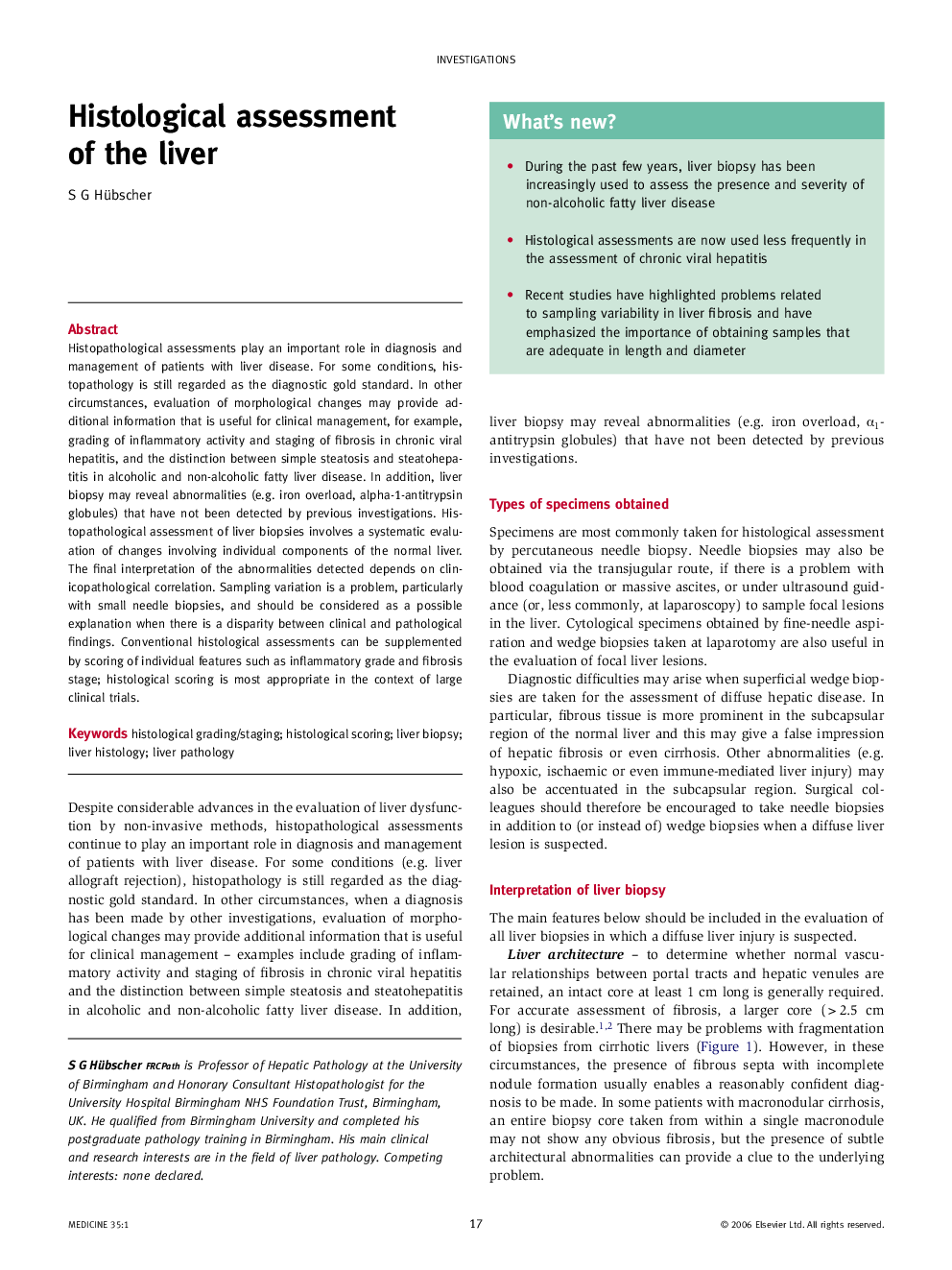| Article ID | Journal | Published Year | Pages | File Type |
|---|---|---|---|---|
| 3808120 | Medicine | 2007 | 5 Pages |
Abstract
Histopathological assessments play an important role in diagnosis and management of patients with liver disease. For some conditions, histopathology is still regarded as the diagnostic gold standard. In other circumstances, evaluation of morphological changes may provide additional information that is useful for clinical management, for example, grading of inflammatory activity and staging of fibrosis in chronic viral hepatitis, and the distinction between simple steatosis and steatohepatitis in alcoholic and non-alcoholic fatty liver disease. In addition, liver biopsy may reveal abnormalities (e.g. iron overload, alpha-1-antitrypsin globules) that have not been detected by previous investigations. Histopathological assessment of liver biopsies involves a systematic evaluation of changes involving individual components of the normal liver. The final interpretation of the abnormalities detected depends on clinicopathological correlation. Sampling variation is a problem, particularly with small needle biopsies, and should be considered as a possible explanation when there is a disparity between clinical and pathological findings. Conventional histological assessments can be supplemented by scoring of individual features such as inflammatory grade and fibrosis stage; histological scoring is most appropriate in the context of large clinical trials.
Related Topics
Health Sciences
Medicine and Dentistry
Medicine and Dentistry (General)
Authors
S.G. Hübscher,
